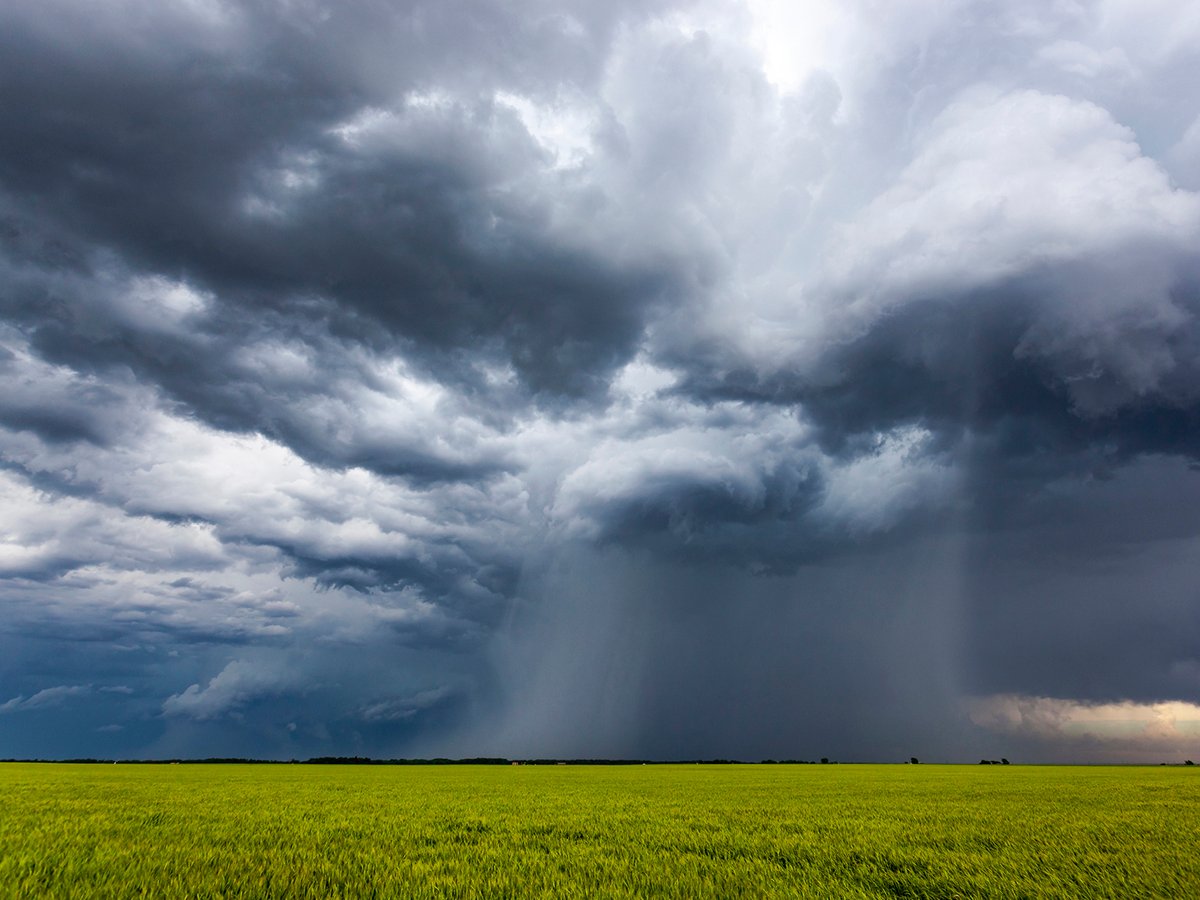Sask Water is fielding more complaints than usual this year from
farmers concerned that their neighbours are not sharing water.
Don Dill, regional water resource manager for the Saskatchewan crown
corporation in North Battleford, Sask., said the situation is
especially acute in western and northern
regions.
“There are many, many desperate people out there,” he said.
There has been little or no spring runoff to fill dugouts, and springs
that normally flow in July have dried up.
Read Also

Extreme rain increases as planet warms
In this issue, we are going to wrap up our look at extreme rainfall by examining the different weather patterns that tend to be associated with these rainfall events.
“I don’t think I’ve ever seen it as bad.”
He said Sask Water’s job is to separate fact from fiction, steer clear
of personal issues and keep focused on the legislation outlining how
farmers access water.
One of this year’s complaints came from Frank Blair of Herschel, Sask.
He said that springs usually run down from nearby hills to his land to
fill a dugout and refresh Eagle Creek.
But that didn’t happen this year and he contacted Sask Water to point
the blame at his neighbour, Berny Wiens.
“My cows are drinking out of a stagnant old pool at Eagle Creek. My
cows are getting thin,” Blair said.
“All I want is just a little water going through for my cattle.”
Wiens, a former provincial NDP cabinet minister, argued there is enough
water in the 21/2 kilometres of Eagle Creek that flows through the
cattle pasture.
He also said he has not created new dams, but restored a Prairie Farm
Rehabilitation Administration dam and irrigation project that were
created for market gardening in the 1930s.
Wiens grows cantaloupes, watermelons and pumpkins, and has stocked a
pond with fish. He also built a beach and floating dock in hopes of
bringing more tourism to the region.
Blair said some of Wiens’s fish eventually end up in his dugout, where
they are not wanted.
The area has had successive years of dry weather, and conditions have
been made worse by this year’s drought.
Ian Burns, also desperate to find enough water for his cattle, has 10
head bunking in with Blair’s cattle.
He doesn’t think Wiens should be able to block the stream, especially
in a drought.
“Every drop counts,” he said.
Burns said that without water, he will be forced to truck his animals
to pastures in the south. Blair also will have to move his cattle to
other pastures on his land.
Blair thinks Sask Water is treating Wiens differently than other
irrigators because of his political connections to the provincial
government.
Sask Water denies that and recently asked Wiens to release more water
to fill Blair’s dugout.
“We need to treat him, and do treat him, the same as we do anybody
else,” Dill said.
He said water and drainage stir up passions among users.
“People often use water to get back at somebody else.”
Sask Water has advised Blair to create another dugout to protect
against future drought, but Blair argues that would cost him money and
is unnecessary.
“Why should I build a dugout? I can’t afford thousands of dollars to
accommodate Berny Wiens and Sask Water.”
Dill said farmers are allowed to use water flowing through their
properties for domestic purposes. However, they are required to obtain
permits from Sask Water if the water is diverted or dammed.
Because Wiens made changes to his irrigation system, he is required to
obtain approval and a new irrigation certificate from Sask Water, Dill
said.
Farmers must also get approval before and following construction of new
irrigation works.
“Sometimes with irrigators, they put these things up and we get
involved after the fact,” Dill said.
“This is one of these situations.”
Dill said Wiens is drawing up a water-use plan for Sask Water that must
accommodate downstream
- eeds.
“You need to make sure (Blair) has a similar situation as he would
under natural conditions,” Dill said.
“That’s up to us to make sure that now happens.”
Sask Water plans to evaluate whether drought, Wiens’s horticultural
enterprise or both have caused water shortages on Blair’s farm.
In the meantime, Wiens said he is prepared to co-operate with Sask
Water.
“When they want a release, I’ll make a release,” he said.














